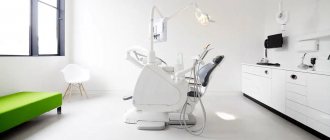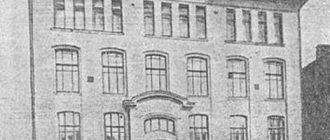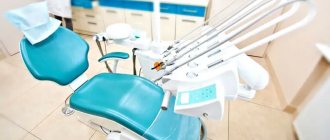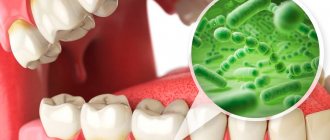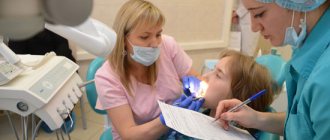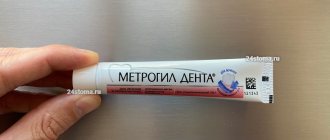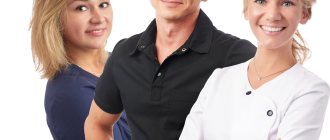Licensing procedure
Article 12 of Federal Law No. 99-FZ of May 4, 2011, which defines the general licensing rules in Russia, establishes that all types of medical activities are classified as licensed. A specific list of areas of dentistry in the license is given in an additional regulatory document - Government Decree No. 291 of April 16, 2012. It includes the following areas of work activity of a doctor in dentistry:
- hygienic;
- general;
- children's;
- area of general practice;
- orthopedic;
- preventive;
- therapeutic;
- surgical
Each of these areas requires a separate license. To obtain it, the applicant will have to study the list for a dental office license, which describes the necessary equipment. The issuance of such documents is carried out by Roszdravnadzor and relevant departments of regional executive authorities.
To obtain a license, the applicant provides the regulatory agency with a package of documents confirming that he meets the established standards and has purchased the necessary equipment in quantities not less than the established one. Based on the results of consideration of the application, a decision is made to grant a license or refuse to issue it. If the decision is positive, the validity period of such a document is not limited in accordance with Part 4 of Article 9 of 99-FZ.
Required documents
To obtain a license to operate a dental clinic, the applicant will need to draw up an application according to the established template. It is given in the appendix to Roszdravnadzor Order No. 3166 dated May 5, 2014. You will need to attach a list of documents to it that will confirm that you have fulfilled the current requirements for licensing orthodontists or other dentists and are ready to start working. The list of such documents includes:
- notarized copies of the company’s constituent documentation;
- copies of documents confirming the legal right to use premises suitable for the provision of services and having an area not less than the established one - for example, a certificate of ownership or a lease agreement;
- copies of documents indicating that the applicant has the legal right to use medical equipment and equipment in an amount not less than necessary to perform work in the chosen field of dentistry;
- information on the compliance of the existing premises with sanitary and epidemiological safety standards;
- copies of registration certificates for the equipment used;
- copies of diplomas, certificates and certificates confirming that the head of the organization and its doctors have the required level of education, qualifications and work experience in the relevant profile that is not less than established - for example, this is a physiotherapy room for licensing a dental organization or a functional diagnostics room;
- copies of diplomas or certificates of staff members who will be involved in the maintenance of medical equipment, or a copy of the agreement with the organization that will provide such maintenance;
- a copy of the receipt confirming payment of the state fee for the provision of the service for issuing a license;
- a list of documents provided as part of the package.
List of required equipment
One of the important licensing conditions that the applicant must meet is the equipment of dentistry for licensing, that is, the availability of medical equipment in an amount no less than necessary to provide quality services. This issue is regulated by a separate legal act - order of the Ministry of Health dated December 7, 2011 N 1496n. Appendix No. 11 to this order provides the current standards for equipping different types of dental offices for licensing. This section of the document contains standards for:
- general practice offices as part of a dental clinic;
- therapeutic, surgical, orthopedic dentistry offices as part of a specialized clinic;
- a dental laboratory operating as part of a specialized clinic;
- an orthodontic, physiotherapeutic, x-ray room as part of a dental clinic, as well as a functional diagnostics room and a mobile unit;
- centralized sterilization unit as part of the clinic.
The required dental equipment for a license given in the document is differentiated for organizations in which doctors provide inpatient and outpatient care to patients.
ATTEK center services
The ATTEK Center has been providing support for licensing applications for dental clinics and offices for many years. This is one of the core areas of our activity, which is handled by highly professional employees. They thoroughly know the standards of current legislation and regulatory authorities in this area, and in addition, they regularly monitor current legislation for changes. We offer you a full range of work that allows you to quickly obtain a dental license.
Equipment for dental organizations: regulatory framework
So, the list of main regulatory documents that regulate the standards for equipping a general dentistry office for licensing and other types of dental organizations includes:
- Federal Law of November 21, 2011 No. 323-FZ, dedicated to issues of protecting the health of citizens;
- Sanitary and epidemiological requirements for medical organizations SanPiN 2.1.3.2630-10, approved by Resolution of the Chief State Sanitary Doctor of May 18, 2010 No. 58;
- Decree of the Government of the Russian Federation of April 16, 2012 No. 291, establishing the procedure for licensing medical activities;
- current Order of the Ministry of Health dated December 7, 2011 No. 1496n, which defines the rules for the provision of dental care to adult citizens by doctors;
- Order of the Ministry of Health of November 13, 2012 No. 910n, establishing the rules for the provision of dental care to children by doctors;
- new Order of the Ministry of Health dated July 31, 2022 No. 786n, introducing an updated procedure for the provision of dental services to the adult population by doctors.
New rules for equipping dentistry from 2022
From January 1, 2022, a new list of dental office equipment for licensing will come into force in Russia, approved by Order of the Ministry of Health No. 786n. The procedure for its operation is determined by an additional regulatory document - Order of the Ministry of Health dated June 9, 2022 No. 560n, which also comes into force on January 1, 2022.
The new equipment rules involve the following changes to the current procedure:
- In addition to the required number of doctors, each dental office must install its own dental X-ray machine with a digital image receiver. This technique will require the hiring of specialized personnel, including radiologists, and consequently, the permitted organizational and legal forms of organizations that are allowed to engage in this type of work activity will also change. Individual entrepreneurs are prohibited from working with such installations: they will have to re-register as an LLC;
- operating LLCs, whose list of working equipment for licensing a dental office previously included only a visiograph, will be required to purchase a panoramic X-ray machine. This means they will need a larger room, since each installation will require at least 4 square meters of additional space.
The operation of additional working equipment must be carried out in accordance with SanPiN 2.6.1.1192-03, approved by Resolution of the Chief State Sanitary Doctor of February 18, 2003 No. 8: they regulate the rules of work for doctors in X-ray rooms. In addition, when making changes to the standard list of equipment for equipping a dental laboratory for licensing, all organizations will need to re-issue documents for the equipment, which, of course, will require additional time and financial costs.
Finishing, microclimate and communications of the dental office
Pay attention to the surfaces of the dental office: they should be flat, smooth, wear-resistant, made of material that is not afraid of constant treatment with disinfectants. The walls and floor should be connected in such a way as to avoid gaps where it is impossible to get dust and dirt.
You can choose linoleum as a floor covering, but skirting boards and sealing of the joints of the canvas are required.
Surfaces that may be wet, namely the bathroom, walls near sinks and equipment, must be covered with tiles.
The sink and cabinet walls need to be covered with:
- At least 1.6 meters from the floor,
- 0.2 m beyond the appliance or sink.
The choice of ceiling is yours (suspended or suspended), the main thing is that it is easy to wash and disinfect.
As a rule, walls should be painted in light and neutral colors, since other shades can distort the color of the patient’s tooth enamel, gums and blood as perceived by the doctor.
Using mercury-based amalgam to decorate walls, you can choose to cover it with plaster (if the wall is brick) or grout (panel), with the addition of 5% sulfur to bind mercury fumes. At the same time, any decorations on the walls with such a coating are prohibited.
Ventilation and heating systems are one of the main points that need to be paid attention to. An autonomous heating system is required to maintain air purity in accordance with the indicators of contamination of the air with pathogenic microorganisms in accordance with the maximum permissible concentrations prescribed in SanPiN.
Requirements for temperature and humidity indicators:
- Above +18°C in winter and below +25°C in summer.
- Relative humidity from 40 to 60%.
- The speed of movement of air masses is 0.2 m/s.
If the area of the dental clinic is less than 500 m2, the following is allowed:
- Natural ventilation using vents, therefore, easy-to-use transoms with easy access to them are needed.
- Supply and exhaust system arrangement.
- Equipped with split systems that are acceptable in medical institutions, provided that the filters are cleaned every 6 months.
All utility networks in dental offices must be hidden. Any problem in the ventilation system must be addressed immediately. Microbiological and chemical indicators of air should not violate the requirements of SanPiN.
It is prohibited to install the ventilation system in such a way that contaminated air enters the “clean” area. Therefore, when planning it, keep this in mind.
Hot and cold water supply is necessary for a dental office. If there is no centralized water supply in the premises, provision from other sources approved by the conclusion of the SES is allowed.
Requirements for dental equipment
One of the key standards that a dental organization must satisfy in order to obtain a license to conduct its activities is compliance with established standards for equipping it with equipment and tools. The current list of drugs and equipment for organizing a dental office is contained in Resolution No. 1496n. It contains lists of required items, the number of which is calculated depending on various factors, including:
- number of doctors' jobs;
- the number of divisions operating in the organization;
- the required number of types of equipment per organization;
- number of patient visits;
- number of doctor positions;
- number of assistant jobs;
- number of shells;
- other criteria.
Some types of positions are acquired by the organization at its own discretion if necessary - but not less than the minimum values.
General requirements
According to Resolution No. 1496n, the preparation of a list of equipment for dental offices for licensing must be carried out in accordance with the type of organization and the profile of its working activities. The appendices to this regulatory document separately formulate standards for the following types of dental institutions.
| Type of organization | Units within its composition that are subject to equipment requirements |
| Dental clinic | Department or office of therapeutic dentistry |
| Department or office of surgical dentistry | |
| Department or office of orthopedic dentistry | |
| Dental laboratory | |
| Orthodontic department or office | |
| Physiotherapeutic department or office | |
| X-ray department or office | |
| Functional diagnostics room | |
| Centralized sterilization department or unit | |
| Mobile dental office | |
| General medical facility providing dental care on an outpatient basis | Department of therapeutic dentistry |
| Department of Surgical Dentistry | |
| Department of Orthopedic Dentistry | |
| Dental laboratory | |
| Orthodontic department | |
| X-ray department | |
| Dental office in educational organizations, recruiting stations and enterprises | |
| Hospital | Maxillofacial and Dental Surgery Department |
| Operating room of the surgical maxillofacial and dental department | |
| Profile division of the surgical maxillofacial and dental department | |
Principles of therapeutic dental treatment at the Amel Dental clinic
- safety of all procedures;
- treatment without pain and without complications;
- desire to preserve teeth;
- the use of the most gentle treatment methods to minimize intervention and prolong the life of teeth;
- caring for the health and beauty of your smile.
Innovative technologies (modern stoma equipment, dental microscope), dental materials and medications of the highest quality help us guarantee such treatment results. We use digital technologies in diagnostics and treatment, which allows our doctors to make an accurate diagnosis, control all processes, avoid errors and guarantee patients high quality dental services.
Standards for different types of organizations
For specialized departments of dental clinics, the list of equipment for licensing a dental office most often contains 100 or more items. For auxiliary units it is somewhat shorter, but also requires a fairly serious approach to equipping everything necessary.
Equipment standard for the radiology department of the clinic
| N | Name | Quantity, pcs. |
| 1. | Dental x-ray diagnostic device | 1 per office |
| 2. | Dental chair | 1 per dental device |
| 3. | Computed tomograph* | 1 per department |
| 4. | Disposable products: | of necessity*** |
| — masks | ||
| — examination gloves, diagnostic | ||
| - paper chest napkins for patients | ||
| - hand towels in a container | ||
| — sanitary napkins | ||
| - dressings | ||
| 5. | Lamp (irradiator) bactericidal for premises | of necessity*** |
| 6. | Mobile bactericidal lamp (irradiator) for indoors* | of necessity*** |
| 7. | Dental film developing machine | 1 per office |
| 8. | Wall-mounted X-ray viewer | 1 per doctor’s workplace |
| 9. | Assorted scissors | 3 per office |
| 10. | Orthopantomograph with teleradiographic attachment* | at least 1 per department (office) |
| 11. | Dental radiovisiograph included | 1 per department (office) |
| 12. | Individual air conditioning and humidification system in medical rooms** | of necessity*** |
| 13. | Personal protective equipment for X-ray examinations (set) | of necessity*** |
| 14. | Means and containers for disinfecting instruments | of necessity*** |
| 15. | Doctor's desk | 1 per doctor’s workplace |
| 16. | X-ray technician's table | 1 per doctor’s workplace |
| 17. | Doctor's chair | 1 per doctor’s workplace |
| 18. | Medical chair | 1 per doctor’s workplace |
| 19. | Cabinet for storing chemical reagents and materials | at least 1 per office |
| 20. | Medicine cabinet | at least 1 per office |
| 21. | Drying cabinet for X-ray films | at least 1 per department (office) |
| 22. | Wardrobe for medical clothes and linen | of necessity |
*Items that are required to be equipped only when using (declaring) a technology that involves the use of these devices, tools, and medications. **Offices and rooms are equipped in which it is not possible to meet sanitary and hygienic requirements with the existing stationary ventilation and air conditioning systems. ***In accordance with sanitary and epidemiological rules and regulations.
Standard for equipping a functional diagnostics unit in dentistry for a specialized clinic
| N | Name | Quantity, pcs. |
| 1. | Axiograph* | at least 1 |
| 2. | Dental articulator with facebow* | at least 1 |
| 3. | Electroodontic diagnostic apparatus * (odontosensimeter, odontometer) | at least 1 |
| 4. | Disposable products: | on demand*** |
| - syringes and needles for injections | ||
| — masks | ||
| — examination gloves, diagnostic | ||
| - paper chest napkins for patients | ||
| - hand towels in a container | ||
| — sanitary napkins | ||
| - dressings | ||
| — saliva ejectors | ||
| - plastic glasses | ||
| 5. | Chambers for storing sterile instruments (in the absence of a packaging system) | at least 1 per office |
| 6. | Kinesiograph* | 1 |
| 7. | Dental chair if not available in US | 1 per dental device |
| 8. | Lamp (irradiator) bactericidal for premises | on demand*** |
| 9. | Mobile bactericidal lamp for indoors* | on demand*** |
| 10. | Dentist's working place: Dental unit (US), including a dentist's unit (drill), a special chair, a dental hydraulic unit, and a dental operating lamp. These parts can be mounted on a single supporting frame or attached mutually or separately to supporting structures (walls, furniture) | 1 for 2 medical positions with a two-shift working day |
| 11. | Myotonometer* (gnatodynamometer) | at least 1 |
| 12. | Myostim* (electroneurostimulator, neuromyostimulator, peripheral nerve stimulator) | at least 1 |
| 13. | Oral examination kit (basic): | on demand*** |
| - medical dental tray, | ||
| - dental mirror, | ||
| - angular probe, | ||
| - dental tweezers, | ||
| — dental excavators, | ||
| — wide double-sided ironing board, | ||
| - dental spatula | ||
| 14. | Periotest* (device for determining the mobility of teeth, crowns and implants) | at least 1 |
| 15. | Reopolarograph* | at least 1 |
| 16. | Lamp without MRU and US included in the kit | 1 per doctor’s workplace |
| 17. | Doctor's desk | 1 per doctor’s workplace |
| 18. | Dental table | 1 per doctor’s workplace |
| 19. | Medical chair | 1 per doctor’s workplace |
| 20. | Doctor's chair | 1 |
| 21. | T-scan for assessing dentition occlusion* (device for determining central occlusion) | 1 |
| 22. | Medical cabinet for storing consumables and instruments | at least 1 per office |
| 23. | Medical cabinet for medicines | at least 1 per office |
| 24. | Wardrobe for medical clothes and linen | on demand*** |
| 25. | Electromyograph for contact studies* | at least 1 |
*Items that are required to be equipped only when using (declaring) a technology that involves the use of these devices, tools, and medications. **Offices and rooms are equipped in which it is not possible to meet sanitary and hygienic requirements with the existing stationary ventilation and air conditioning systems. ***In accordance with sanitary and epidemiological rules and regulations.
What does a dental therapist do?
Within the competence of a dentist-therapist is the treatment of major dental diseases. A dental therapist does the following:
- conducts an initial consultation;
- performs an examination and, if necessary, refers the patient to hardware diagnostics (X-ray, orthopantomogram, CT);
- makes a diagnosis;
- draws up a treatment plan;
- provides treatment for caries and other dental diseases;
- performs fillings and direct restoration of teeth;
- carries out professional oral hygiene;
- eliminates cosmetic defects of teeth, carries out whitening procedures in dentistry;
- carries out other preventive procedures (remineralization, fluoridation, etc.)
As a rule, a dental therapist also specializes in endodontic treatment, and performs cleaning and root canal treatment.
